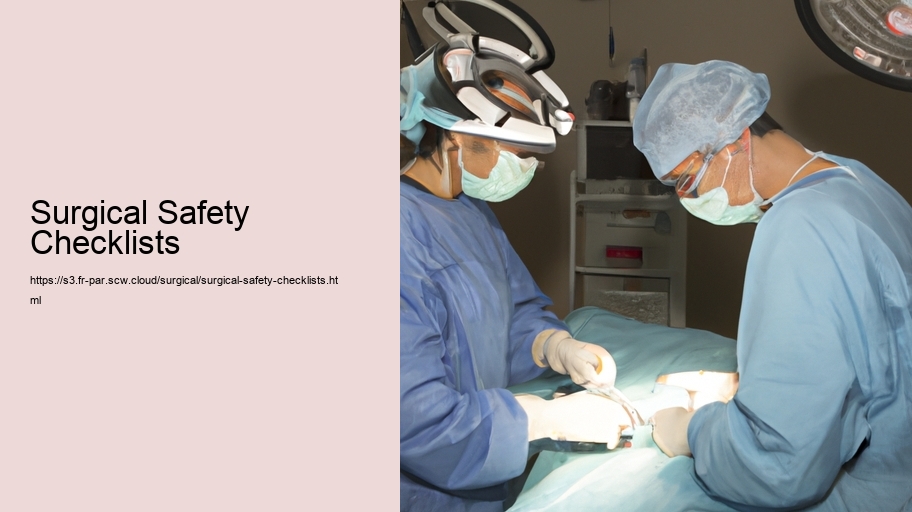Surgical Safety Checklists: An Essential Tool for Modern Medicine
In the high-stakes environment of an operating room, where the margin for error is slim and the consequences of mistakes can be life-altering, the introduction of surgical safety checklists has been a game changer. These checklists serve as a critical protocol to ensure that every surgical procedure is carried out with the utmost attention to safety, enhancing communication and teamwork among surgical staff, and ultimately safeguarding patient well-being.
The concept of a checklist is not new; it has been a staple in industries such as aviation and construction for many years, where the cost of oversight can be catastrophic. In medicine, however, the adoption of checklists has been a relatively recent development, propelled into the mainstream by Dr. Atul Gawande's 2009 book "The Checklist Manifesto." The World Health Organization (WHO) has since championed the cause, releasing a Surgical Safety Checklist designed to be used globally as a standard of care.
The checklist is ingeniously simple, yet its impact is profound. It is divided into three critical phases: before anesthesia is administered (Sign In), before the incision is made (Time Out), and before the patient leaves the operating room (Sign Out). In the Sign In phase, the patient's identity, the surgical site, and the planned procedure are confirmed. Any allergies are noted, and critical equipment is checked. The Time Out phase is a pause before the surgery begins, ensuring that all team members are in agreement about the patient, procedure, and any potential concerns. Finally, the Sign Out phase includes a review of the procedure, a count of surgical instruments and sponges, and the labeling of any specimens collected.
What makes the checklist so effective is its ability to foster a culture of open communication and teamwork. In the high-pressure environment of surgery, a hierarchy can often exist that discourages team members from speaking up. The checklist democratizes the process, giving each member of the team, from the surgeon to the nurses and anesthesiologist, the explicit permission and responsibility to ensure that each step is completed. This can prevent common errors such as wrong-site surgeries or retained surgical items, which, while rare, can have devastating consequences for patients.
Moreover, the checklist serves as a cognitive aid-it ensures that in the complex, fast-paced world of surgery, no step is overlooked. It helps to standardize procedures across different hospitals and countries, which is especially important as the global nature of healthcare continues to grow. With a simple checklist, surgeons and their teams can have a shared understanding of best practices, regardless of cultural or language barriers.
The evidence supporting the use of surgical safety checklists is compelling. Studies have shown that their implementation can significantly reduce both morbidity and mortality rates. A notable example is the WHO's pilot study, which demonstrated that the introduction of its Surgical Safety Checklist resulted in a 47% reduction in deaths and a 36% reduction in complications across eight hospitals around the world.
In conclusion, surgical safety checklists represent a monumental advancement in patient safety and the quality of surgical care. Their simplicity belies the depth of their impact-by providing a structured protocol for communication and verification, they help prevent errors, promote teamwork, and create a standardized approach to surgery. As the medical community continues to strive for excellence in patient care, the surgical safety checklist stands as an essential tool in its arsenal, one that exemplifies the adage that sometimes, the simplest interventions are the most powerful.
